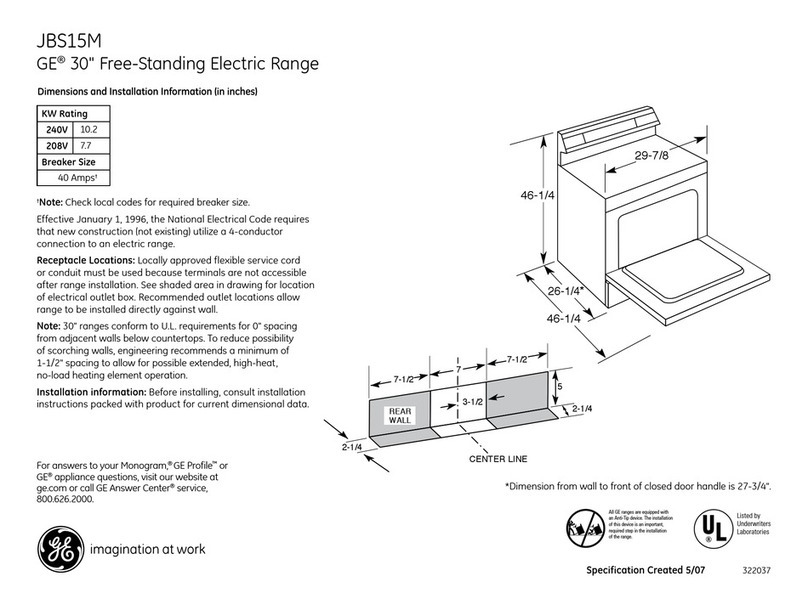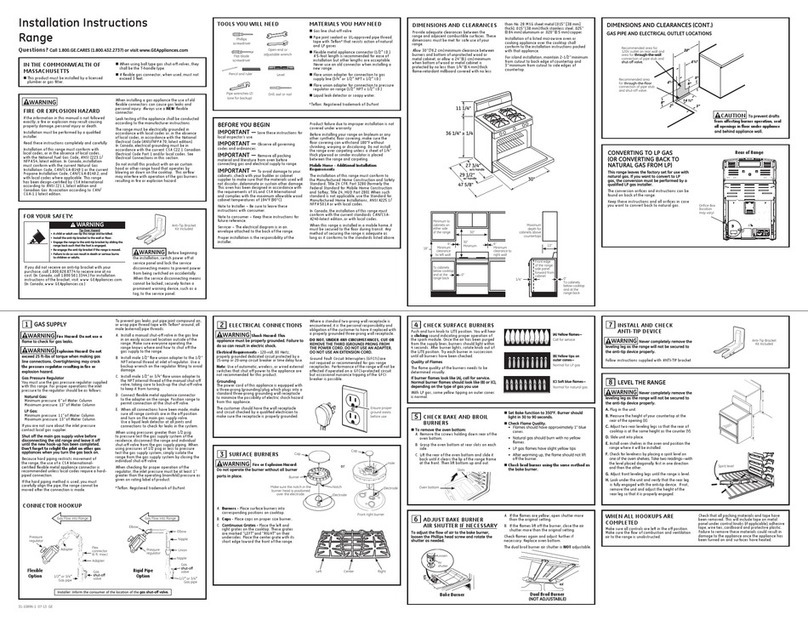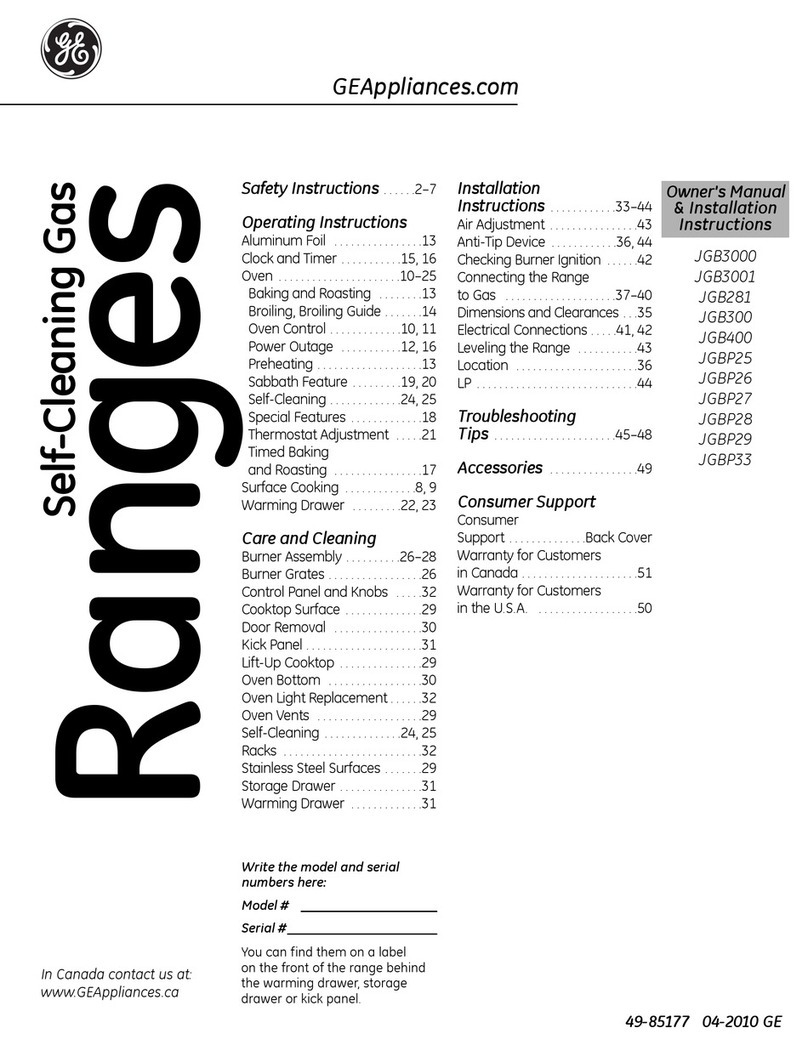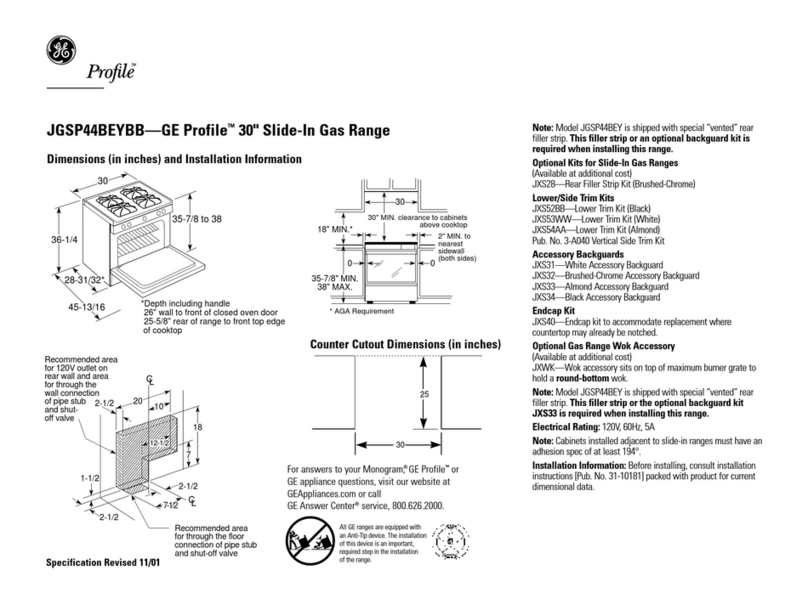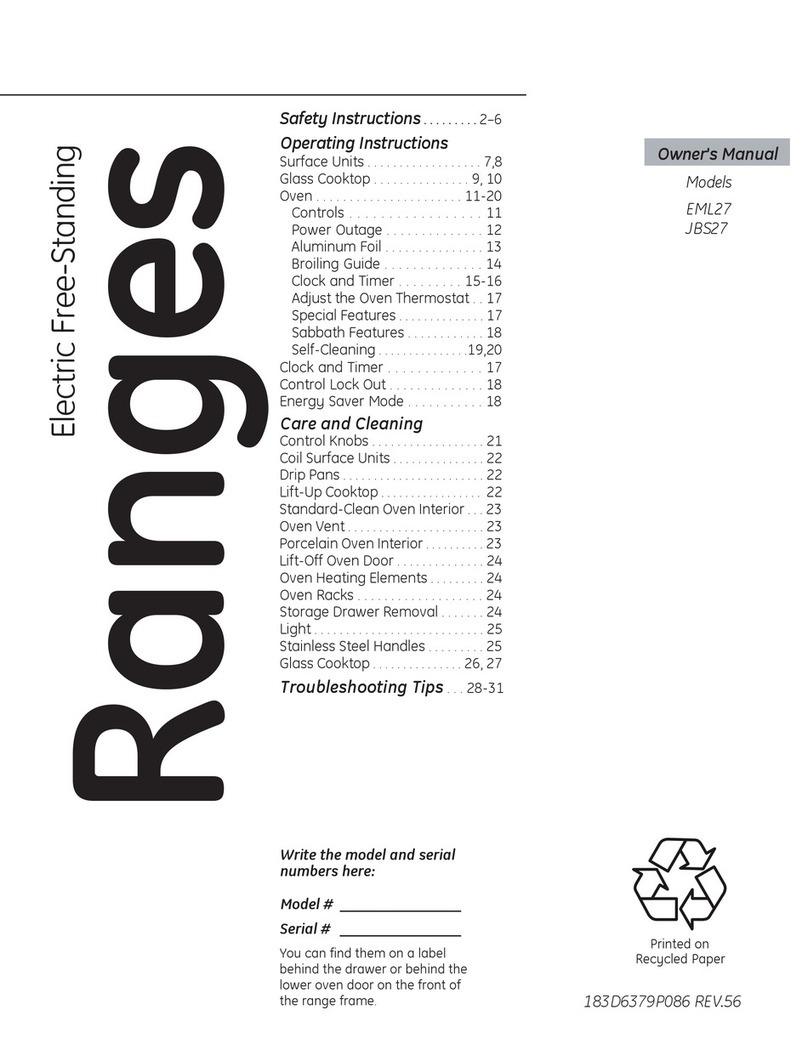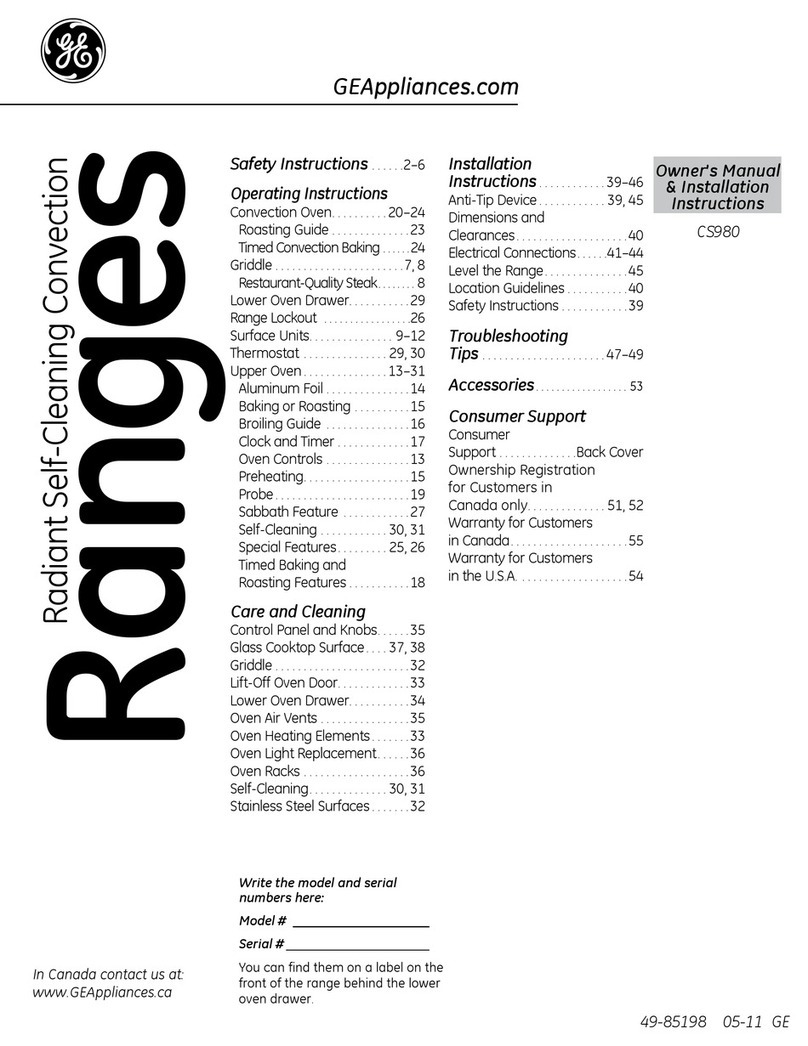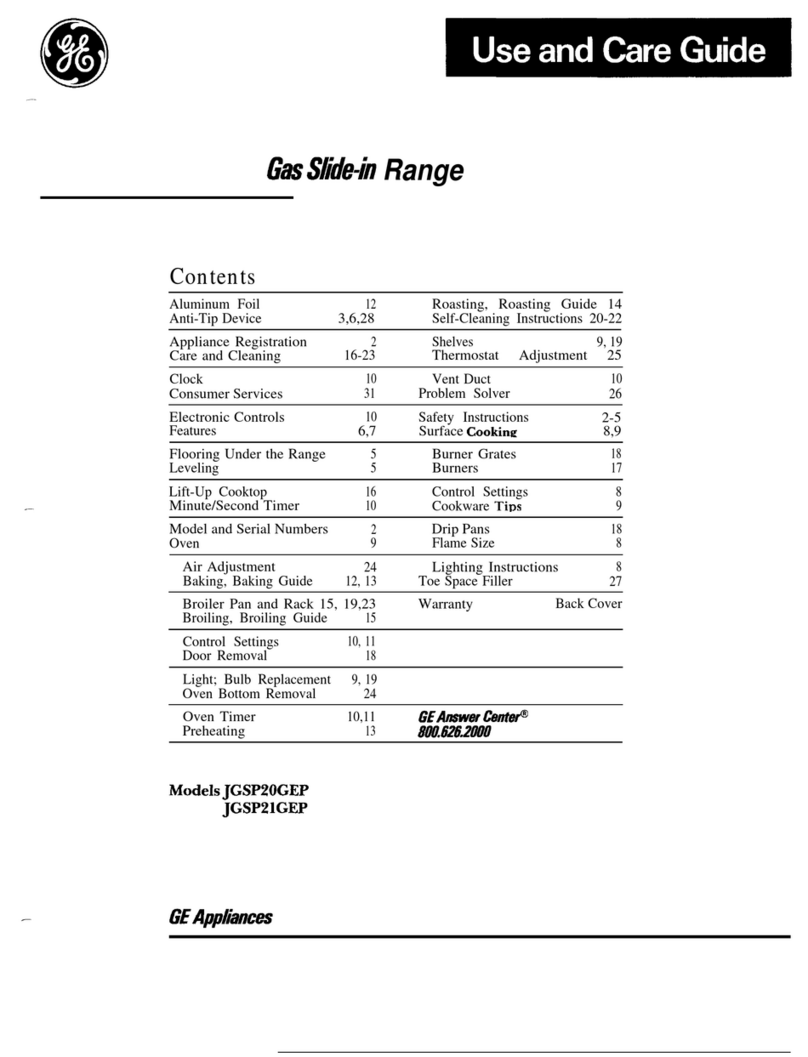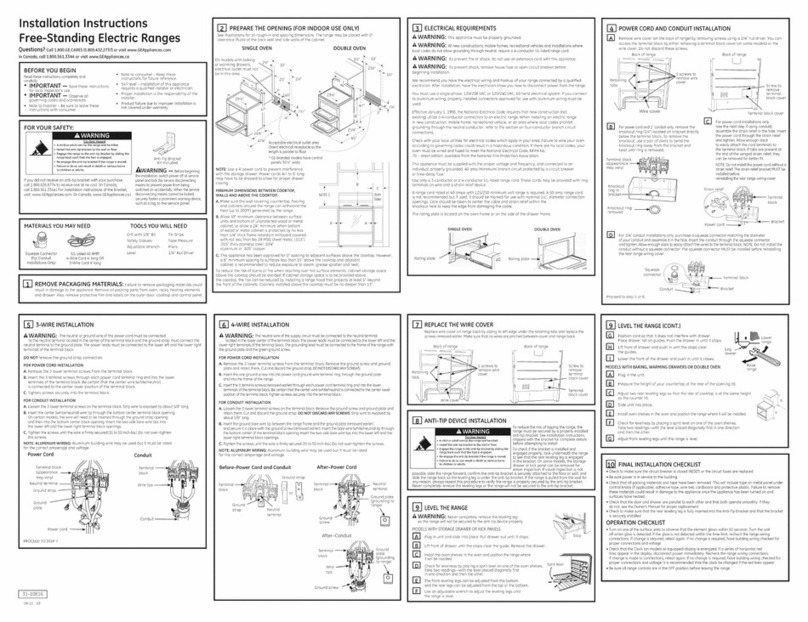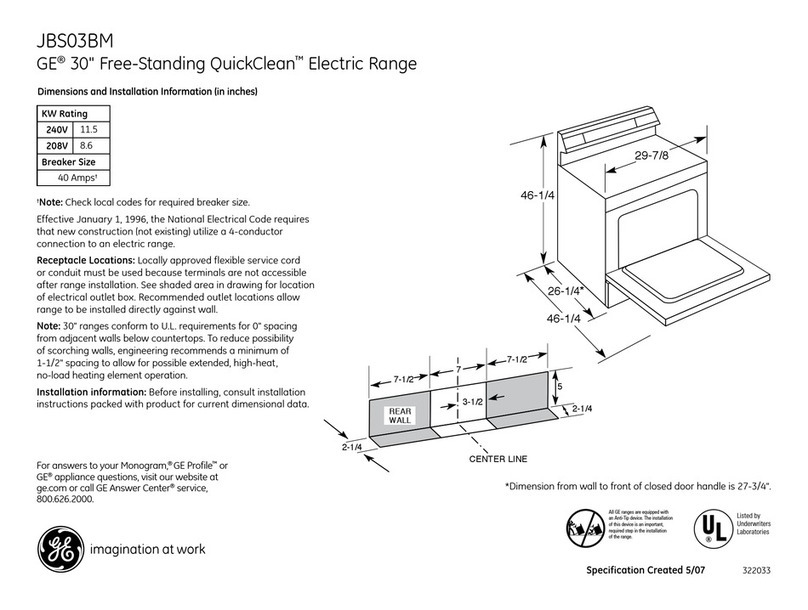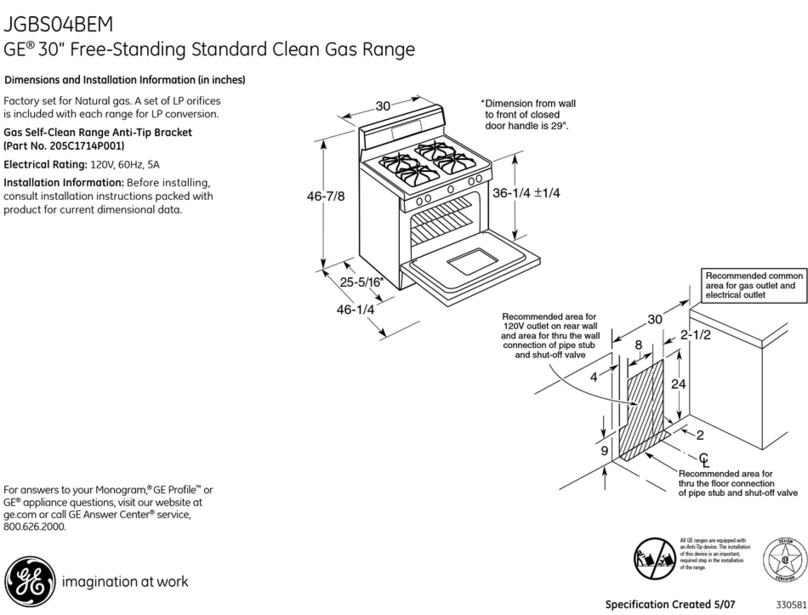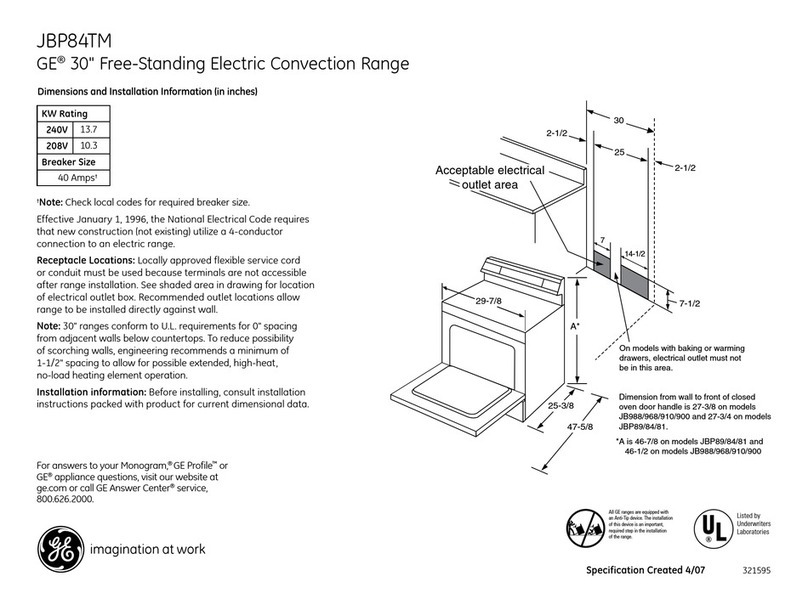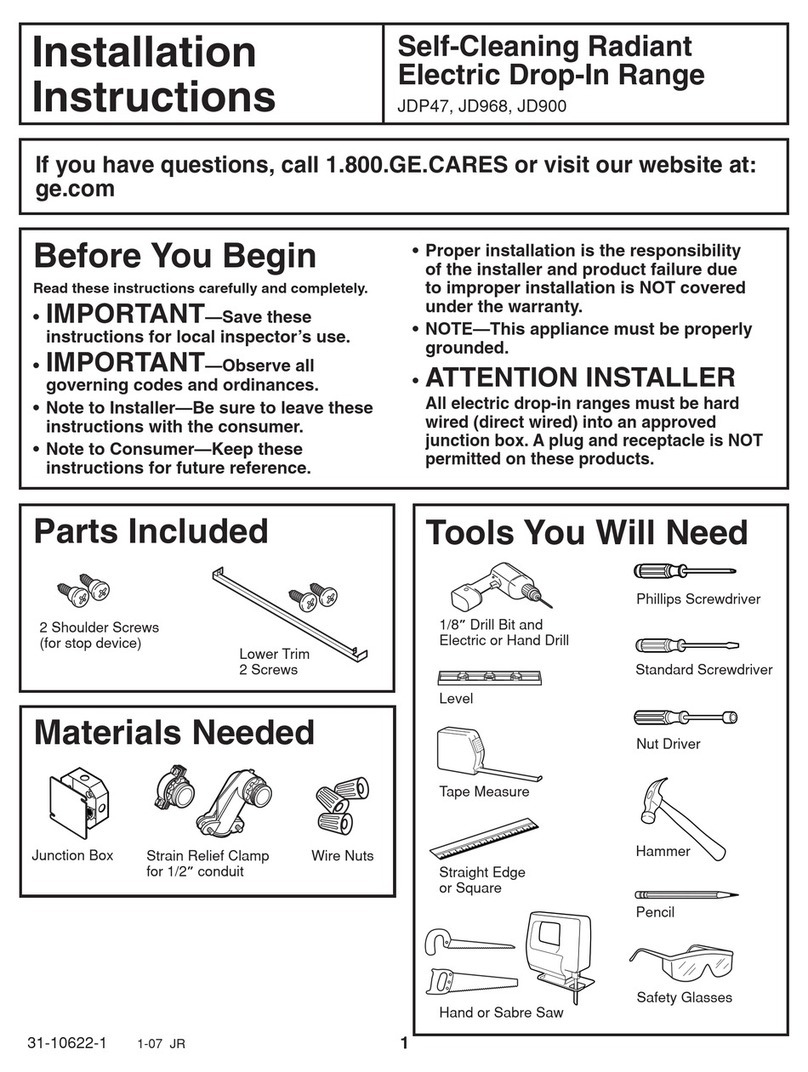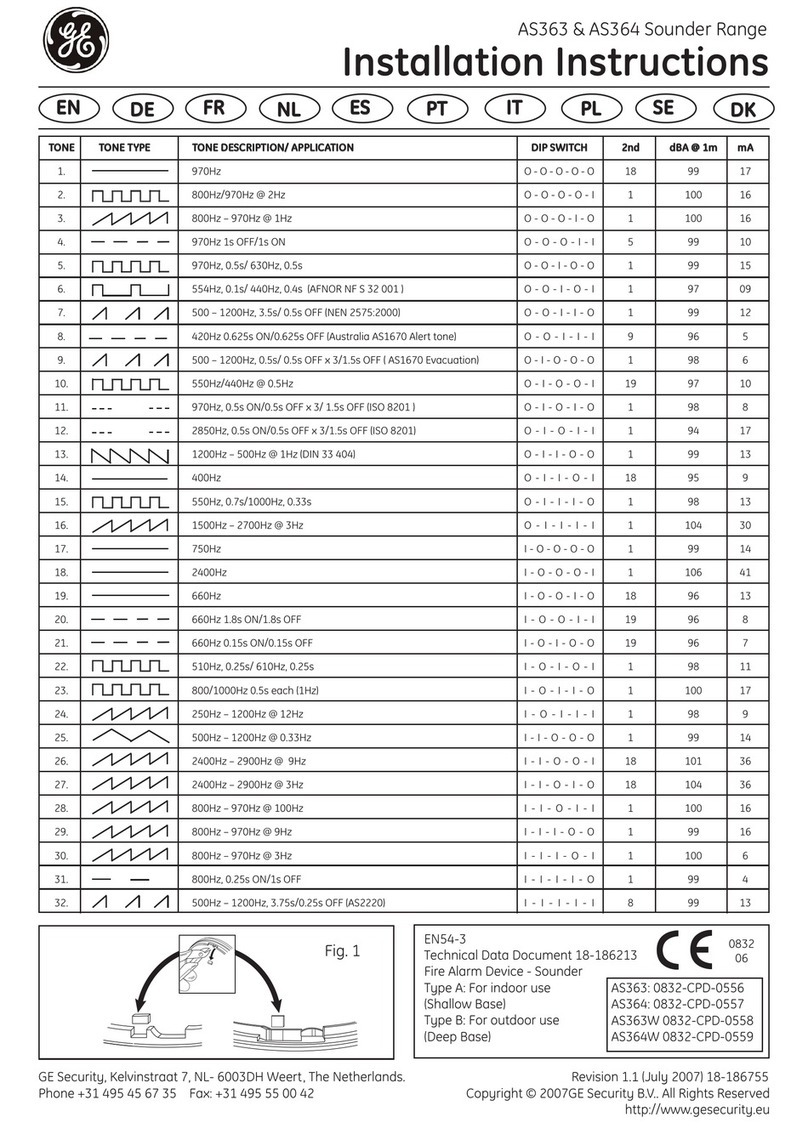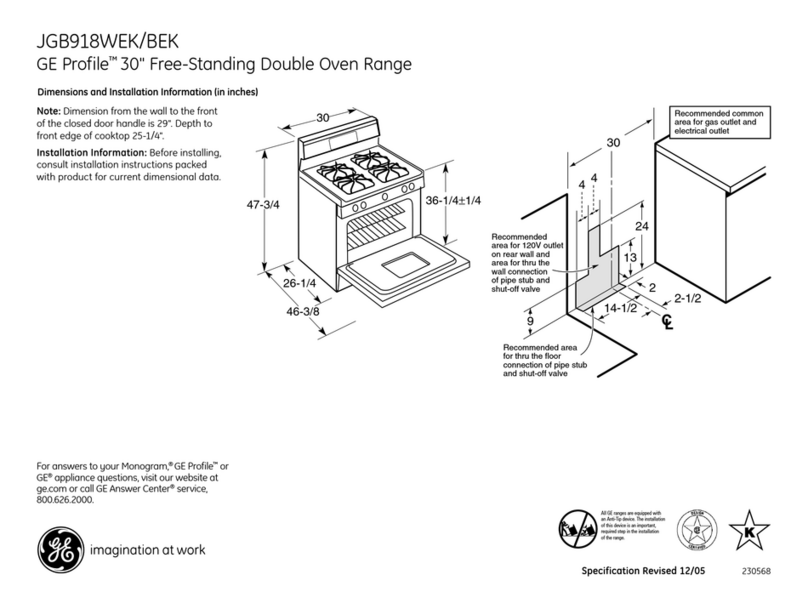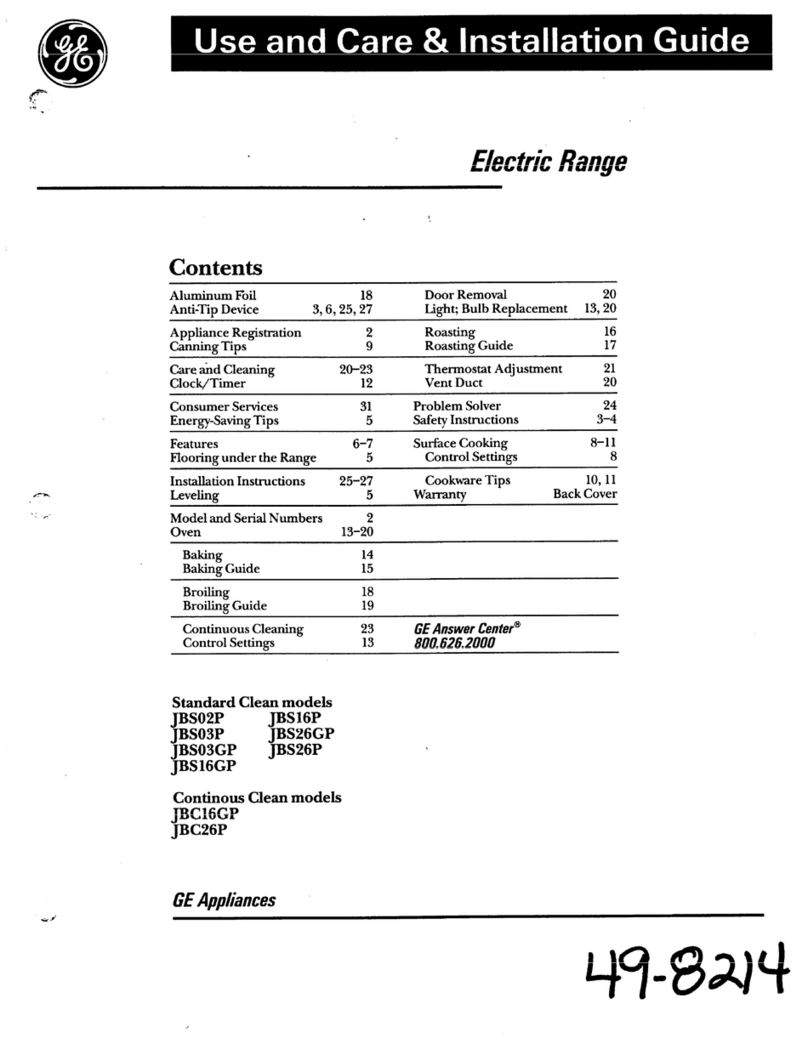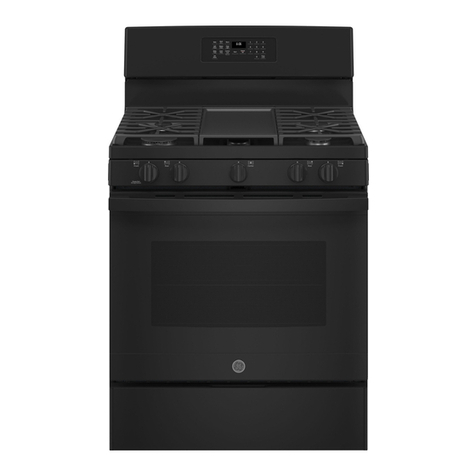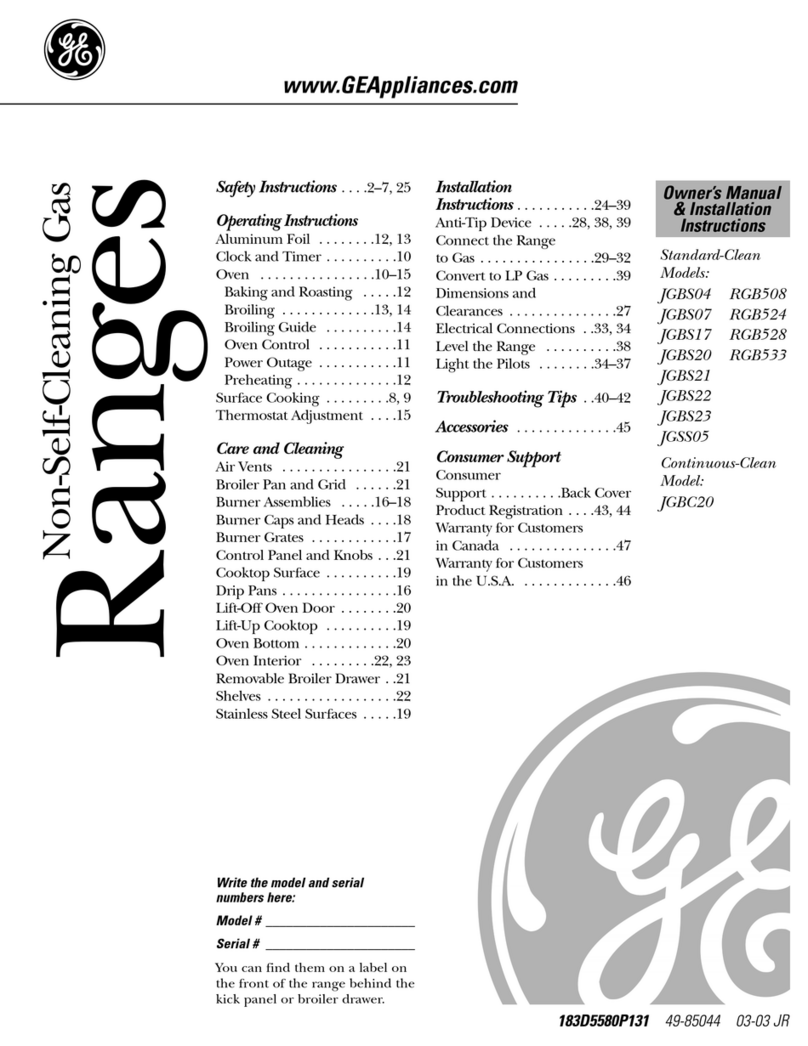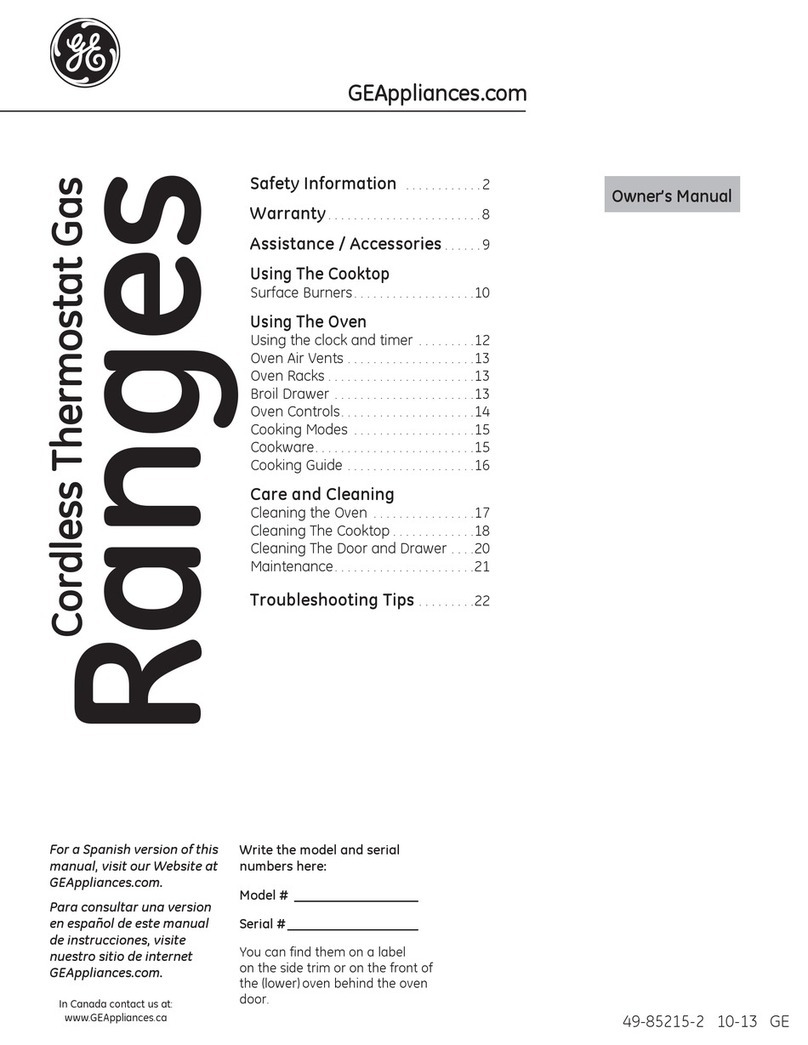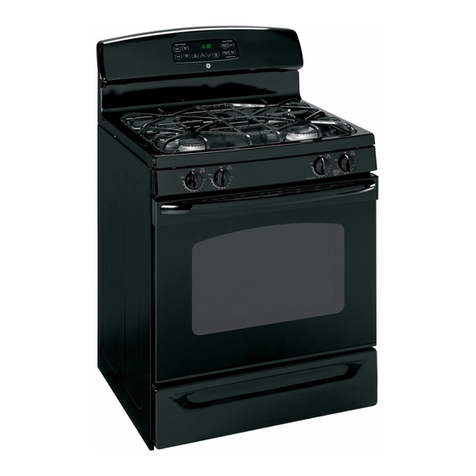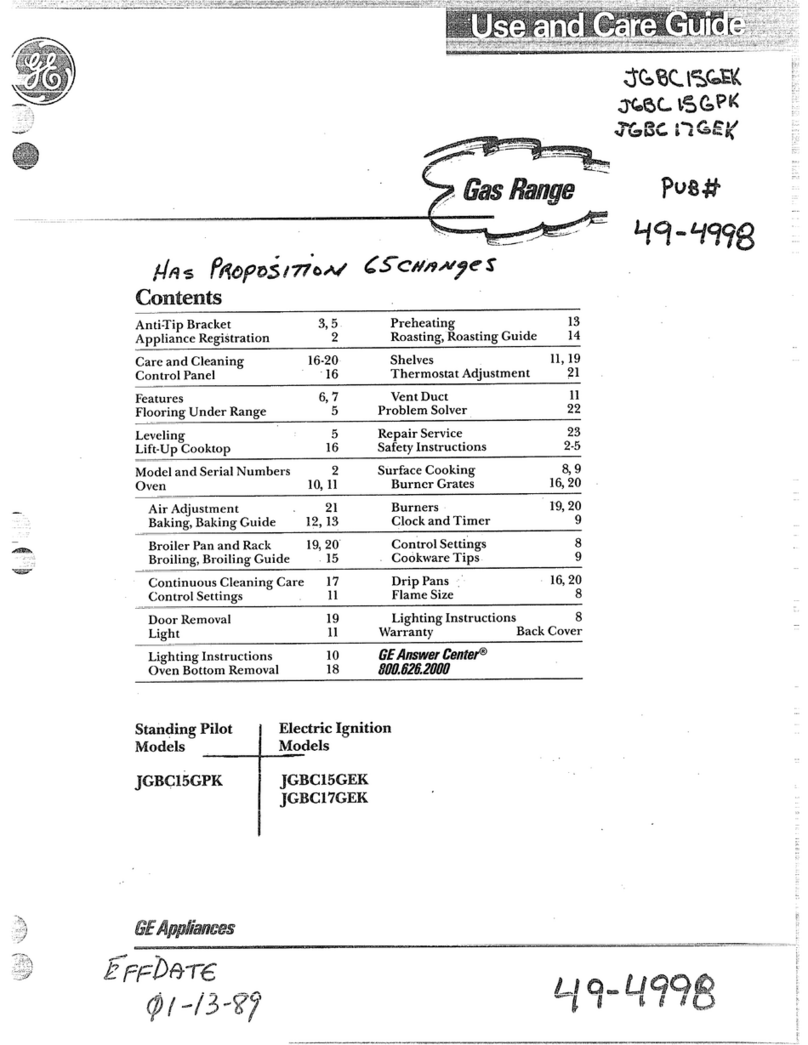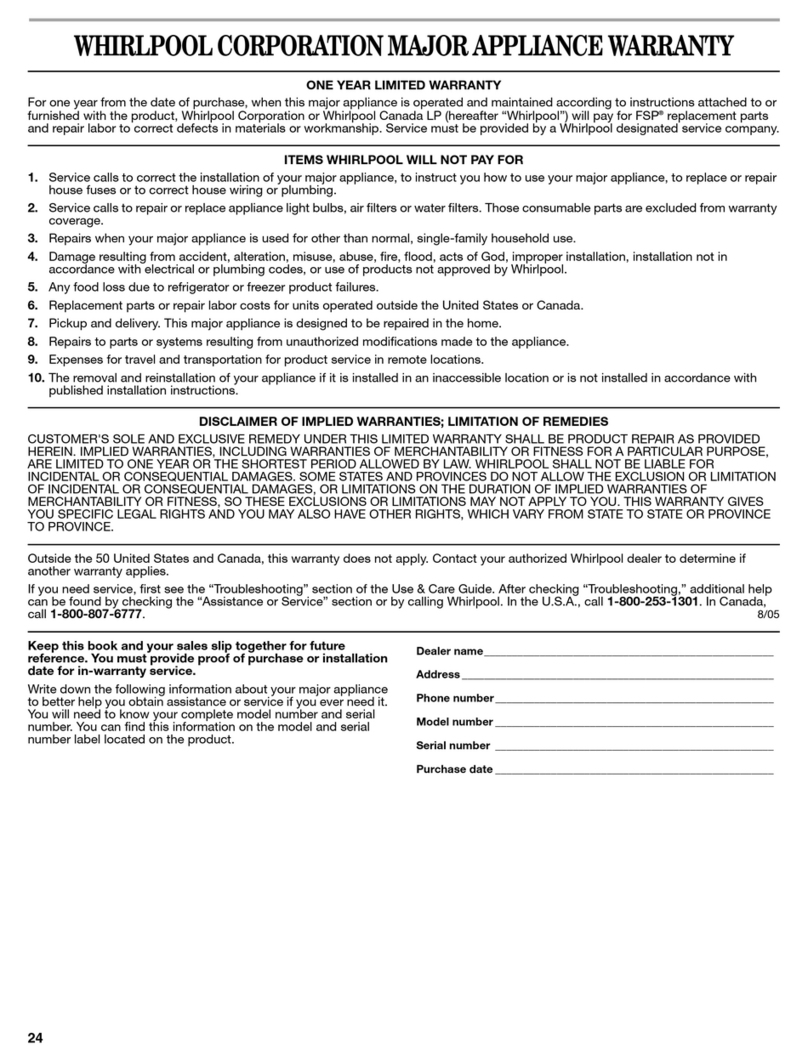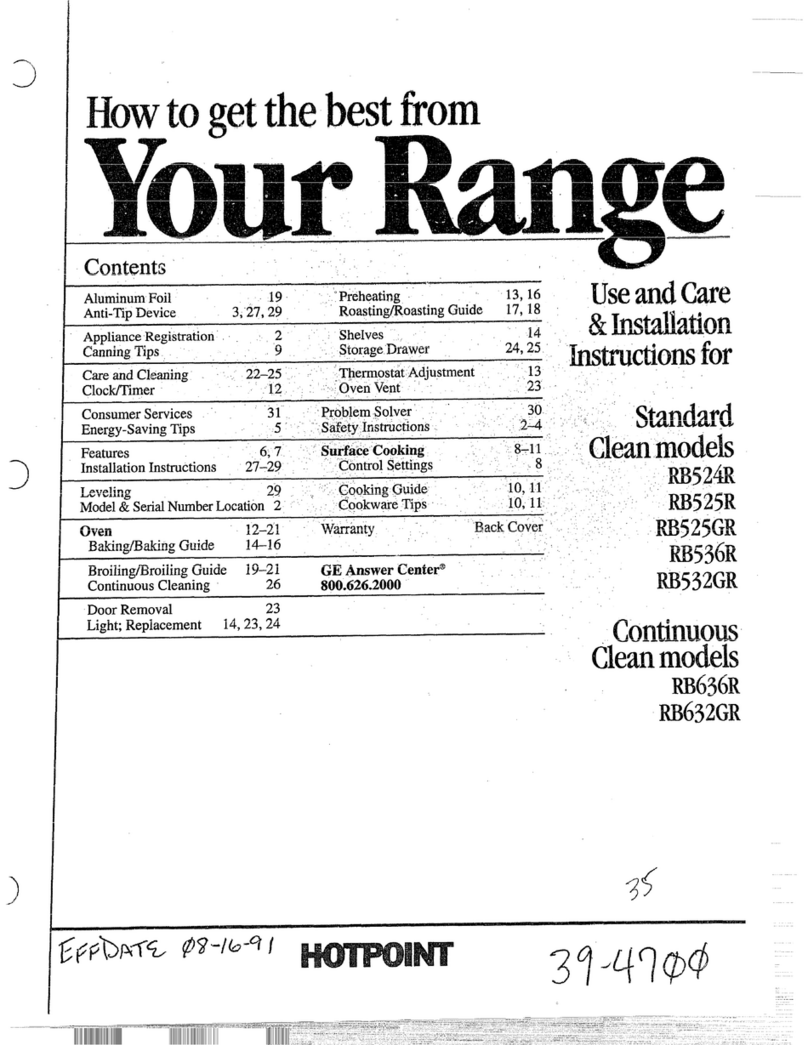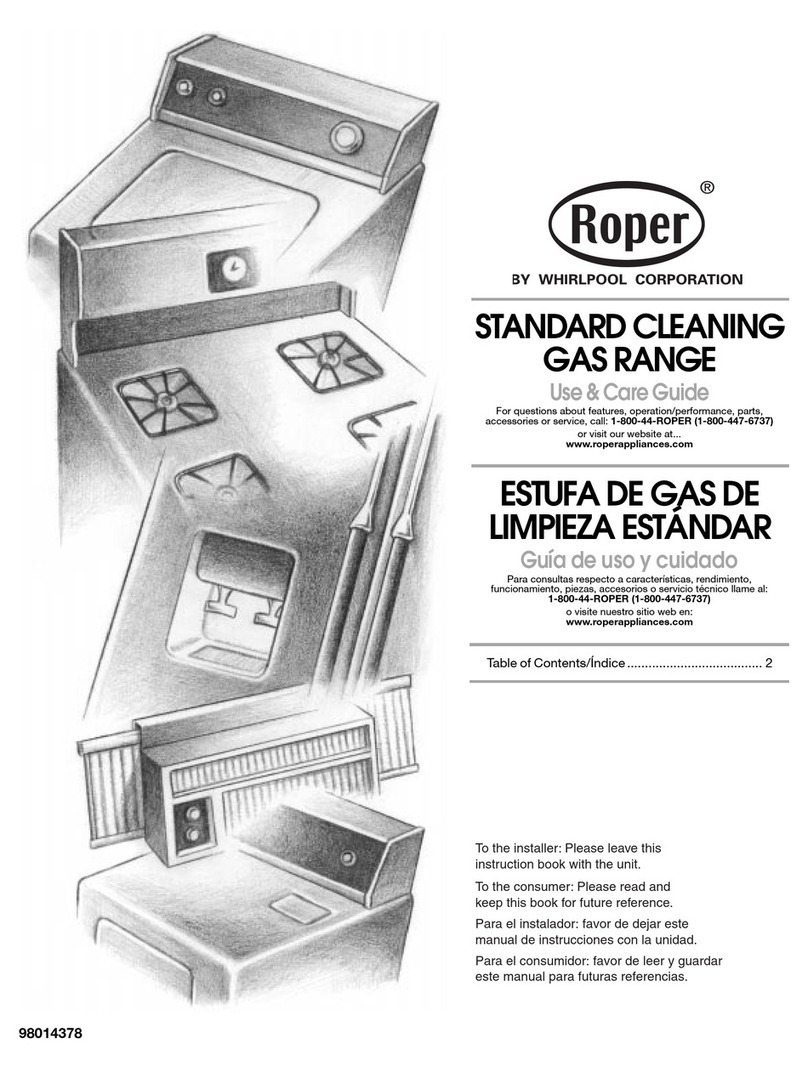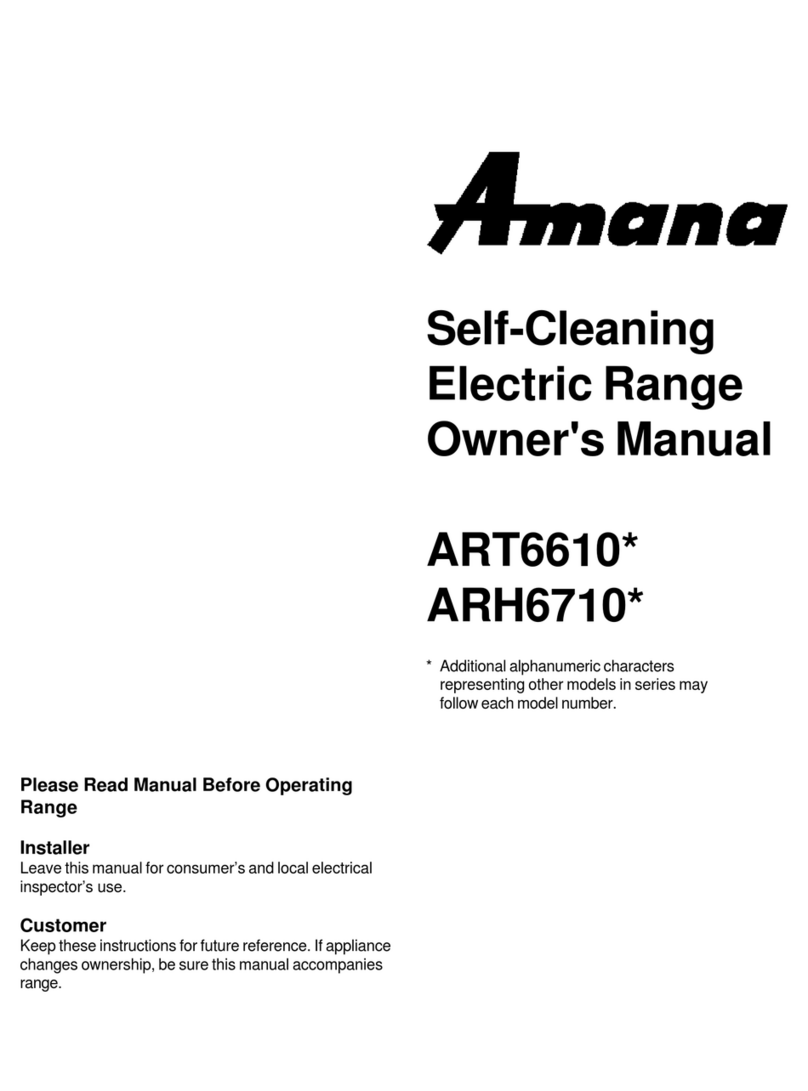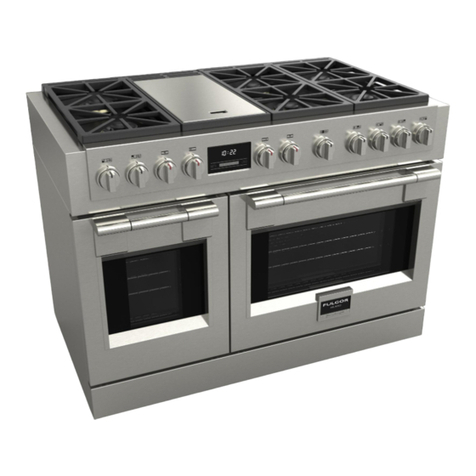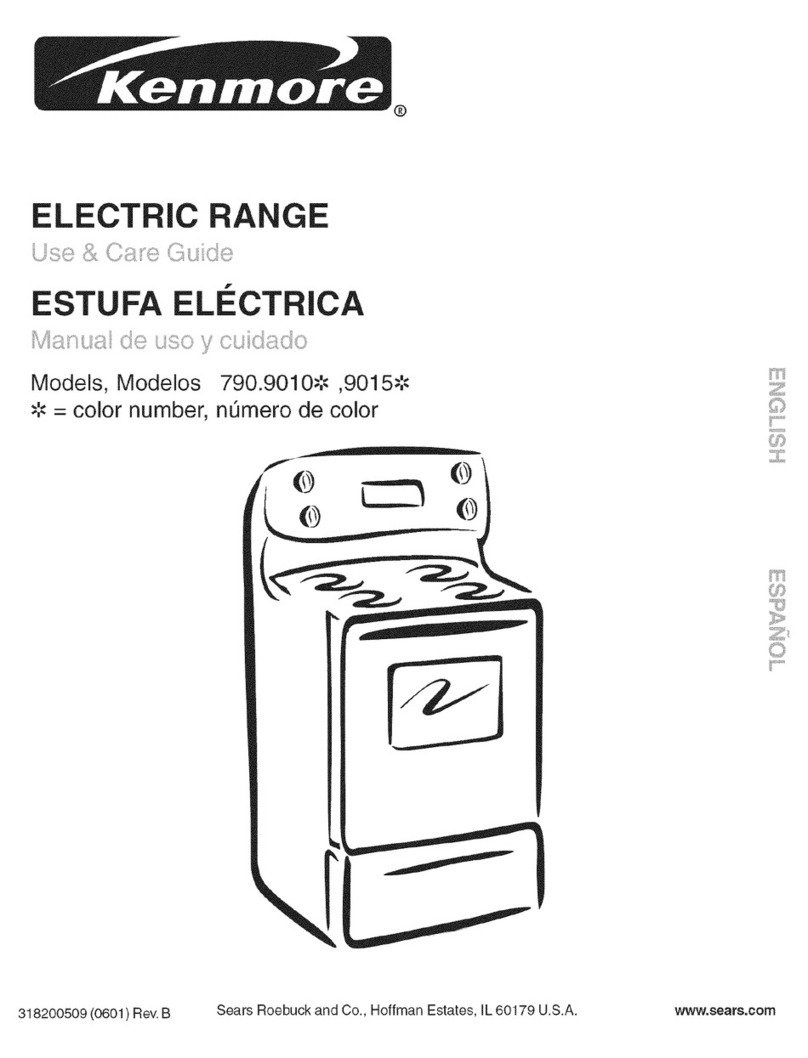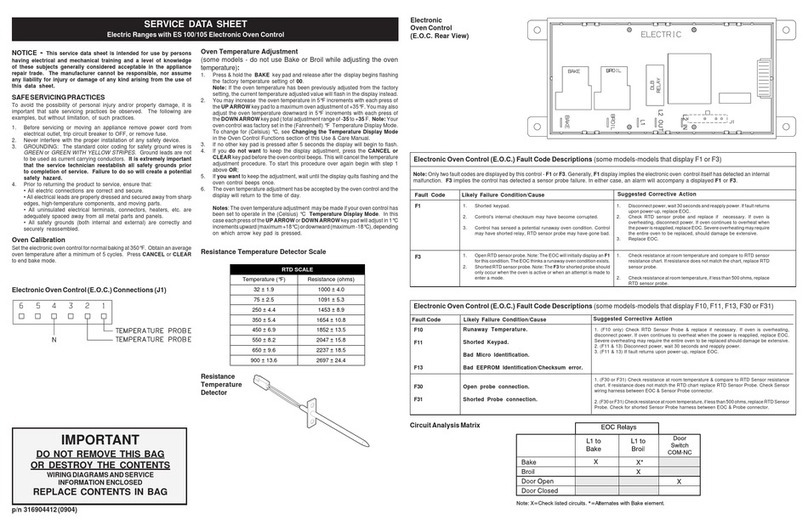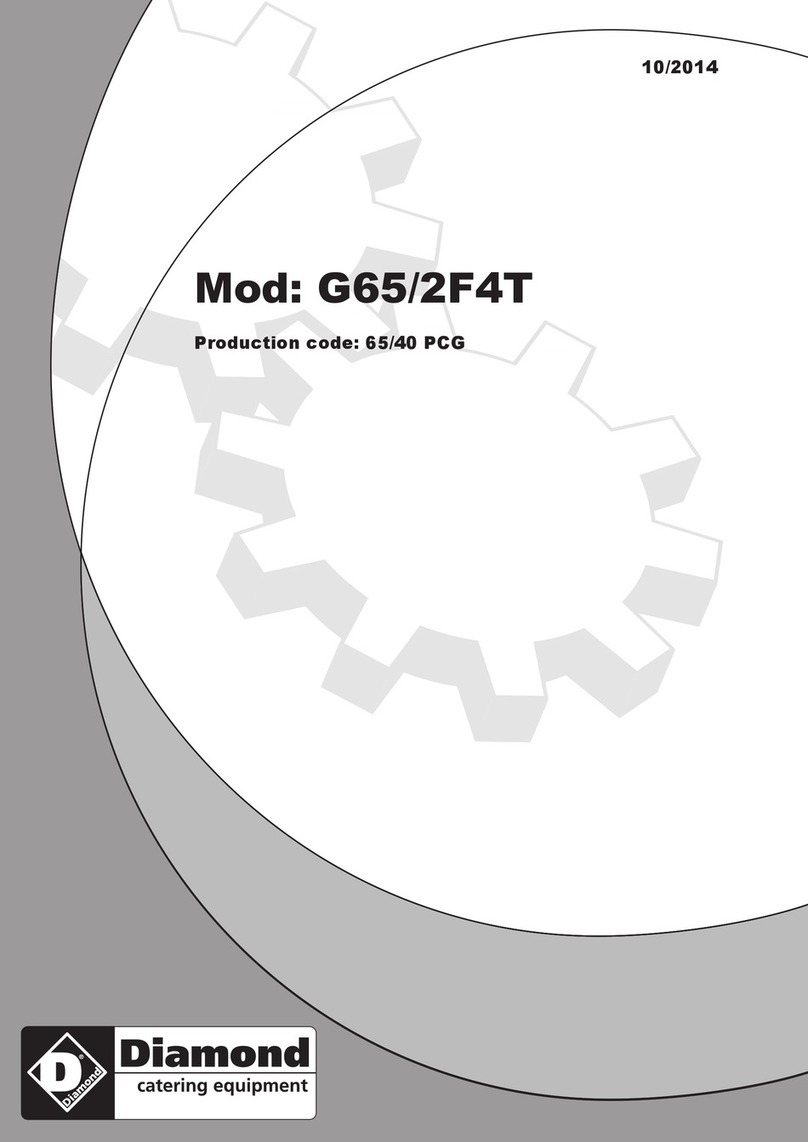WORTANT
SAFE~
mSTRUC~ONS
Read
*
imtmctiom
before
wing
tti
appliance.
~,
,Ien
using electrical appliances, basic safety
precautions should be followed, including the
following:
●
Use this
appliance only for its intended use
as described in this guide.
●
Have the
installer show you the location
of
the
circuit breaker or fuse. Mark it for
easy reference.
●
Be sure your appliance is properly installed and
grounded by a qualified technician in accordance
with the provided installation instructions.
●
Do not attempt to repair or replace any
part of your range unless it is specifically
recommended in this guide. All
otier
servicing
should be referred to a qualified technician.
●
Before performing any service, DISCONNECT
THE RANGE POWER SUPPLY AT THE
HOUSEHOLD DISTRIBUTION PANEL BY
REMOVING THE FUSE OR SWITCHING OFF
THE CIRCUIT BREAKER.
..Do
not store flammable materials in an oven or
ar
the surface units.
●
@o
not leave children
alone+hildren
should
not be left alone or unattended in an area where an
appliance is in use. They should never be allowed
to sit or stand on any part of the appliance.
●
Teach children not to play with the controls
or any other part of the range.
●
Never leave the oven door open when you are
not watching the range.
●
Always keep combustible
wdl
coverings, curtains
or drapes a safe distance from your range.
“
Do not allow anyone to climb, stand or hang
on the door or range top. They could damage
the range and even tip it over, causing severe
personal injury.
●
CAUTION: ITEMS OF INTEREST TO
CHILDREN SHOULD NOT BE STORED IN
CABINETS ABOVE A RANGE OR ON
THE
BACKSPLASH OF A
RANG=HILDREN
CLIMBING ON THE RANGE TO REACH
ITEMS COULD BE SERIOUSLY
~JURED.
●
.Be sure the range is securely installed in a
\unter
that is firmly attached to the house
.~ructure.
Weight on the oven door could cause
the oven to tip and result in injury. Never allow
anyone to climb, sit, or hang on the oven door.
●
Never wear loose-fitting or hanging garments
while using the
appfiance.
Be careful when
reaching for items stored over
the
range.
Flammable material could be ignited if brought
in contact with hot surface units or heating
elements and may cause severe burns.
●
Use only dry pot holders—moist
or
damp pot holders on hot surfaces may
result in burns from steam. Do not let
pot holders touch hot surface units or heating
elements. Do not use a towel or other bulky
cloth,
Such cloths can catch fire on a hot surface unit or
heating element.
●
Always keep dish towels, dish cloths, pot
holders and other linens a safe distance from
your range.
●
Always keep wooden and plastic utensils
and canned food a safe distance away from
your range.
c
For your safety, never use your appliance for
warming or heating the room.
●
DO NOT STORE OR USE COMBUSTIBLE
MATERIALS, GASOLINE OR OTHER
FLAMMABLE VAPORS AND LIQUIDS IN
THE
VIC~ITY
OF THIS OR ANY OTHER
APPLIANCE.
●
Keep the hood and grease filters clean to
maintain good venting and to avoid grease fires.
*
Do not let cooking grease or other flammable
materials accumulate in or near the range.
&
●
Do not use water on grease fires.
4
A
–*
j’
Never pick up a flaming pan.
Smother flaming pan on surface unit
by covering pan completely with well-fitting lid,
cookie sheet or flat tray, or if available, use a dry
chemical or foam-type extinguisher.
Flaming grease outside a pan
can
be put out
by covering with
baking
soda or, if available,
a multi-purpose dry chemical or foam-type fire
extinguisher.
Flme
in the oven can be smothered completely
by closing the oven door and pressing the
CLEAWOFF
pad or by using a dry chemical or
foam-type extinguisher.
(continued tiext page)
